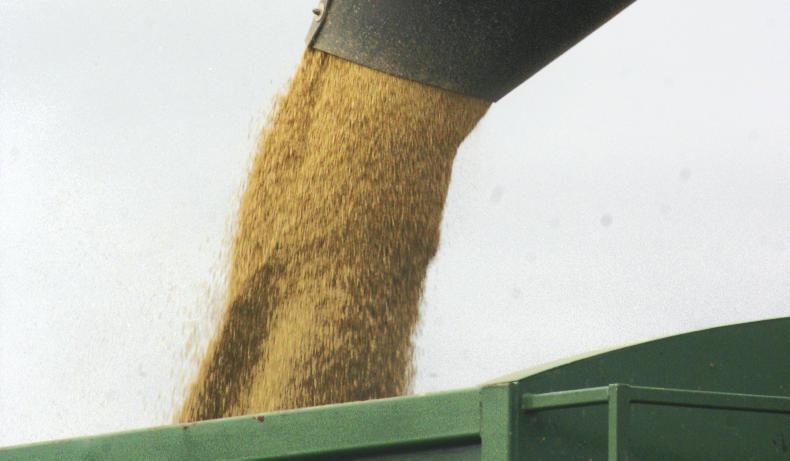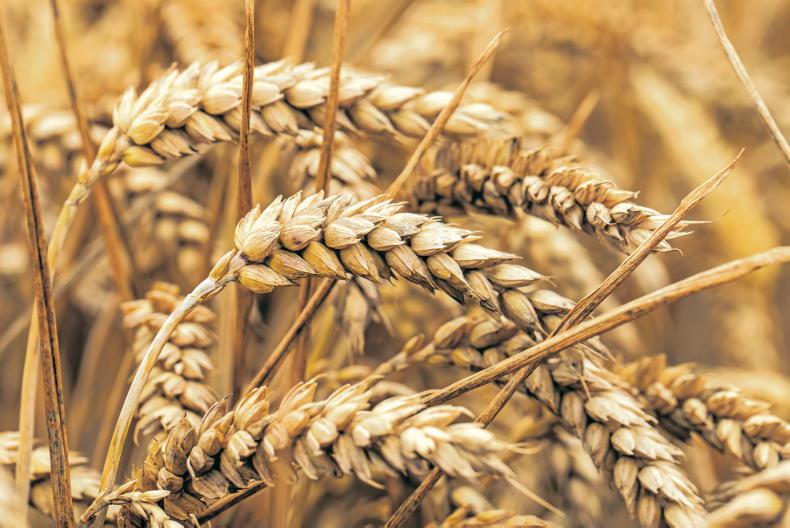Harvest kicks off
This time last year what had looked like an early harvest at one point was pulled back due to slow maturity. This year what was shaping up like a late harvest three months ago has been pulled forward by the ongoing heat to see harvest begin in June. There were a lot more combines out this week but many growers still expect not to be cutting until next week.
Maturity varies within regions and within fields. While crops have been toasted in the heat there are still patches with green straw. But the continuous sunshine and high temperatures may well be roasting the heads to give moisture levels that are much lower than expected. There has already been barley delivered at below 13% moisture and daily moisture drops can be quite significant.
For this reason it is important to watch grain moisture content more than crop appearance. If moistures dip below 18% it may be advisable to take a combine sample.
Yields
Early reports are very variable with yields ranging from 2.6 to 3.8 t/ac. Moisture levels vary from 12% to 18% with specific weights from the 50s to 66KPH. Some crops had suffered badly and this is now reflected in yield but most crops still appear to offer considerable promise.
Assess crops by moisture content rather then appearance because grain moisture can drop very quickly and very low moisture means yield loss.
Desiccation of OSR
The speed of maturation of many oilseed rape crops questions the benefit of desiccation. If the heat continues then natural maturation is an option, especially crops free of weeds. But if there are a lot of weeds at the base then desiccation should be considered. With another week of dry hot conditions forecast, this option may be realistic in varieties that contain the anti-pod shatter gene.
If you intend to desiccate, inspect your crops when there is visible change in colour from green to brown as you look across the top. Follow the protocol of assessing the relative seed colour in 20 pods in different places. When at least two-thirds of the seeds in at least 15 of the pods have turned brown or black the crop is at the earliest correct stage for desiccation. Given the speed of natural desiccation this year this timing might be brought forward slightly.
Use plenty water (200l/ha or more) with up to 2.0kg/ha of Roundup Powermax or 3–4 l/ha of other glyphosate formulations.
Catch crops
If you get fields cut and cleared early, one should take the opportunity to get cover crops planted to help your land in the longer term. While these will not germinate until rain arrives, they can still provide an amount of bulk for either fodder or for incorporation.
Crows: While many spring crops are not good enough to lodge, they could still be attacked by crows because they will find it easier to break down the light straw. So build the defences before any signs of attack.
Read more
Grain markets differ depending on price drivers
Harvest kicks off
This time last year what had looked like an early harvest at one point was pulled back due to slow maturity. This year what was shaping up like a late harvest three months ago has been pulled forward by the ongoing heat to see harvest begin in June. There were a lot more combines out this week but many growers still expect not to be cutting until next week.
Maturity varies within regions and within fields. While crops have been toasted in the heat there are still patches with green straw. But the continuous sunshine and high temperatures may well be roasting the heads to give moisture levels that are much lower than expected. There has already been barley delivered at below 13% moisture and daily moisture drops can be quite significant.
For this reason it is important to watch grain moisture content more than crop appearance. If moistures dip below 18% it may be advisable to take a combine sample.
Yields
Early reports are very variable with yields ranging from 2.6 to 3.8 t/ac. Moisture levels vary from 12% to 18% with specific weights from the 50s to 66KPH. Some crops had suffered badly and this is now reflected in yield but most crops still appear to offer considerable promise.
Assess crops by moisture content rather then appearance because grain moisture can drop very quickly and very low moisture means yield loss.
Desiccation of OSR
The speed of maturation of many oilseed rape crops questions the benefit of desiccation. If the heat continues then natural maturation is an option, especially crops free of weeds. But if there are a lot of weeds at the base then desiccation should be considered. With another week of dry hot conditions forecast, this option may be realistic in varieties that contain the anti-pod shatter gene.
If you intend to desiccate, inspect your crops when there is visible change in colour from green to brown as you look across the top. Follow the protocol of assessing the relative seed colour in 20 pods in different places. When at least two-thirds of the seeds in at least 15 of the pods have turned brown or black the crop is at the earliest correct stage for desiccation. Given the speed of natural desiccation this year this timing might be brought forward slightly.
Use plenty water (200l/ha or more) with up to 2.0kg/ha of Roundup Powermax or 3–4 l/ha of other glyphosate formulations.
Catch crops
If you get fields cut and cleared early, one should take the opportunity to get cover crops planted to help your land in the longer term. While these will not germinate until rain arrives, they can still provide an amount of bulk for either fodder or for incorporation.
Crows: While many spring crops are not good enough to lodge, they could still be attacked by crows because they will find it easier to break down the light straw. So build the defences before any signs of attack.
Read more
Grain markets differ depending on price drivers










SHARING OPTIONS